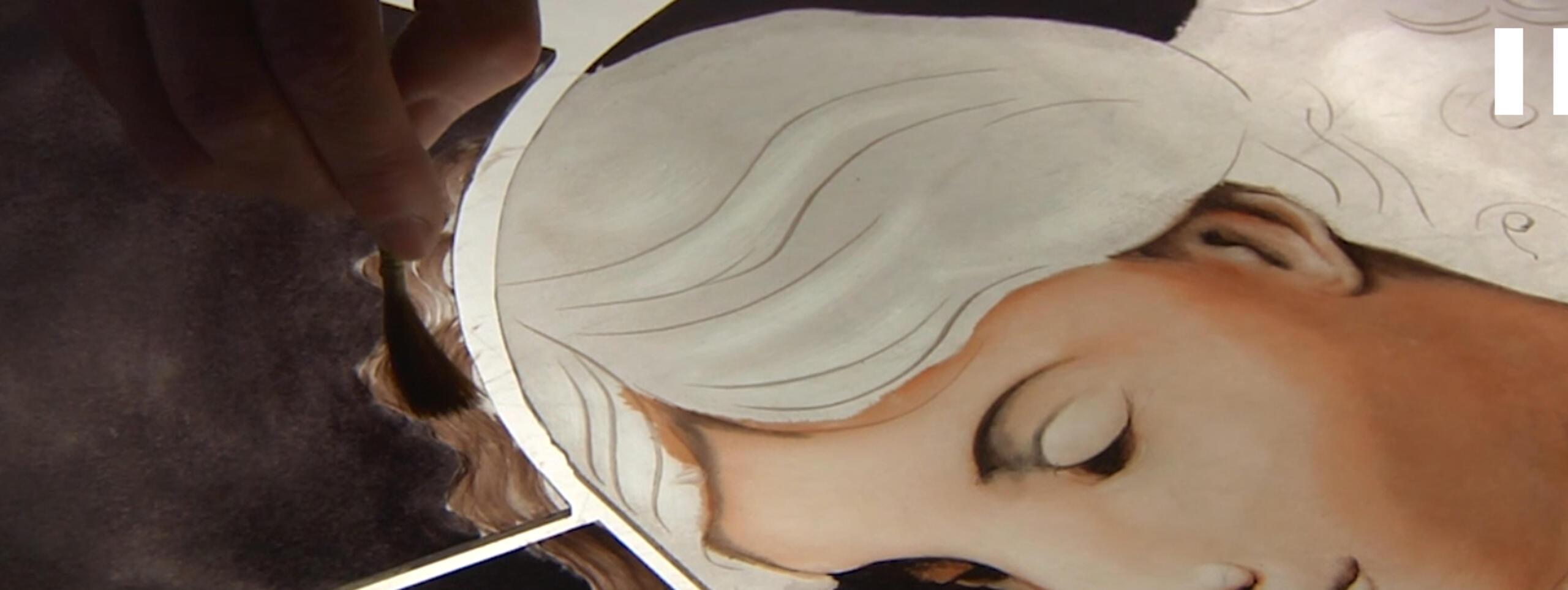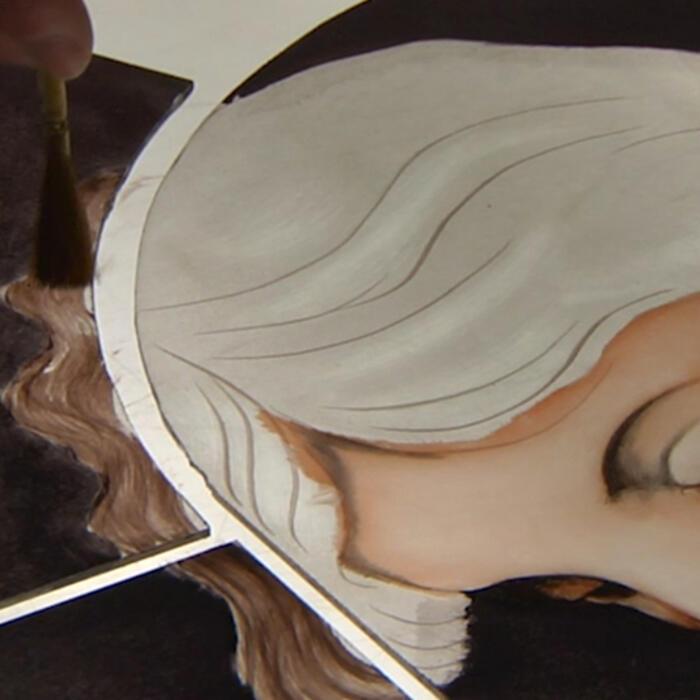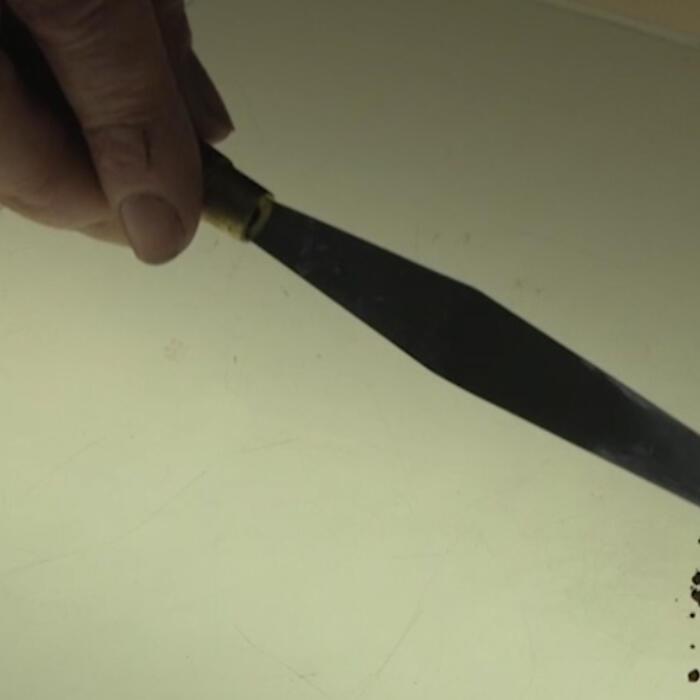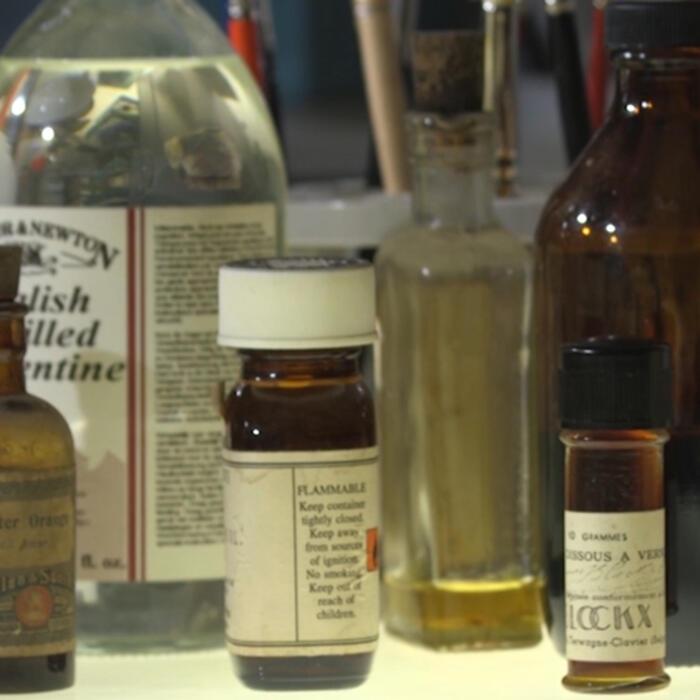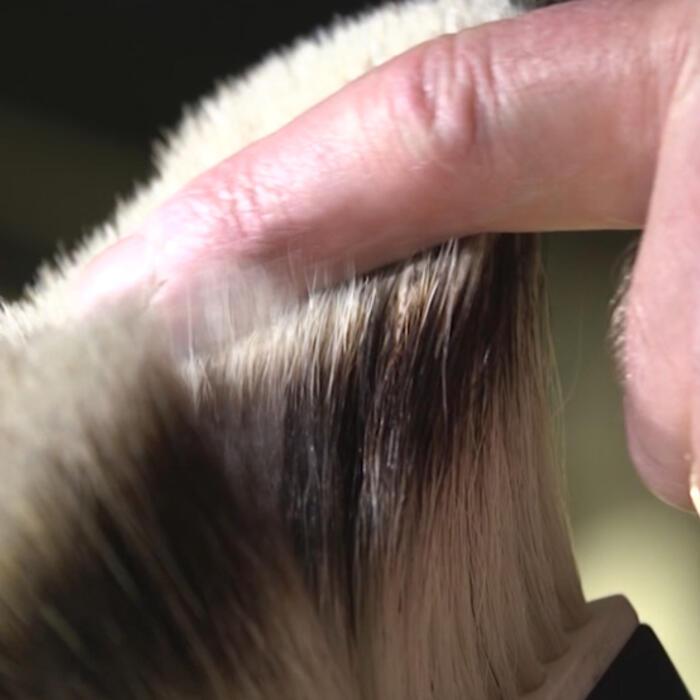In 1829 John Soane commissioned a stained-glass window for his new Tivoli Recess from the glass-painter William Collins. It was based on an 18th century window in New College Chapel, Oxford, designed by Joshua Reynolds, and was installed in 1832. By introducing the window Soane placed Reynolds, the leading British artist of his generation and President of the Royal Academy, alongside leading British sculptors in his new, tiny, gallery of contemporary sculpture.
In October 1940 Soane’s ‘Charity’ window was almost totally destroyed by bomb blast during the blitz. Only the lower panel survived.
As part of Opening up the Soane the Museum commissioned Keith Barley of Barley Studios of York to recreate the window. Keith worked on the research into other Collins windows and on the metal frame, assembly and installation of the Soane window. Jonathan Cooke, one of the UKs leading glass painters, was commissioned to recreate the window. Keith Barley said at the time that Jonathan was the only glass painter in Britain expert enough to undertake the task.
The whole process, including the research, took several years to complete, involving the study of Collins’ glass painting technique by examining other surviving windows and the surviving fragments of the Soane window as well as detailed analysis of surviving record drawings and two 1911 photographs showing parts of the Soane window.
Painting the window Back to top
In this film clip Jonathan Cooke begins with the full-scale preparatory drawing, in pencil, for the window. In working on this drawing, with a copy of one of Reynolds’ preparatory paintings for the New College window to hand, he realised that William Collins, in making his copy, adjusted the figures to make them fit the dimensions of the window. If he had reproduced the figure of Charity directly from Reynolds’ original design one of the glazing bars would have passed directly through her face. To allow for this the figure had to be moved to the right and repositioned. Jonathan’s preparatory drawing took a year to produce, working from time to time and gradually building it up. As Jonathan says, it is not a work of art but a working drawing and therefore some parts are not fully drawn up, for example borders where it is only necessary to draw a small part of a repeated motif to provide enough information to paint the glass. A scroll is drawn in detail on one side just copied and reversed to provide a template for its pair on the other side when the glass is painted.
To begin the painting process Jonathan lays the glass over the drawing so that he can mark key points onto it – for example the eyes and noses of the figures. The drawing is then placed on one side and Jonathan continues his work by drawing free hand onto the glass. As he comments, it is a bit like life-drawing, only working from a drawing rather than a live figure. The process can be slow but is very satisfying.
To illustrate how the painting is done the film shows Jonathan using a sable-hair brush to draw the hair of Charity. The sable-hair softens the drawing and gives it the fine texture of real hair. A nightmare for glass painters is if a tiny hair comes loose from the brush and lodges in the paint unnoticed – the oil paint will dry so slowly around it that it leaves a tiny visible halo!
Pigment and brushes Back to top
The technical side of recreating the window was particularly demanding. As Jonathan says ‘we have not painted glass this way for nearly 200 years’ and what is required resembles porcelain painting technique. He spent time finding out how to paint as Collins did, not only by examining examples of his work but also by reading late Georgian treatises. The paint is just powdered pigment – it’s what it is mixed with that is critical. In medieval times painters mixed paint with urine or wine but by the 19th century they were using a much wider variety of solutions from water and vinegar to different kinds of oils, which were used in a way that is difficult to replicate today. The manuals indicate that what Collins would have used was probably turpentine and Amber oil (interestingly, this is the oil that Salvador Dali always used). However, when Jonathan tried to use it, it didn’t work well, and he had to find an alternative. The project required continuous experimentation throughout to achieve the desired result. This included trying out various brushes with different kinds of hair. In traditional painting artists tend to use badger-hair brushes but for this purpose Jonathan found badger too rough and scratchy. In the end, after trying many different types, he found that the ideal brush to soften and stipple the surface was a Police Fingerprint brush– made of squirrel hair! As Jonathan concludes, glass painting is all about the technique: if you understand the materials and how to apply them then you can achieve then you can do it!
Today, visitors can see the magnificent recreated window reinstalled in the Tivoli Recess exactly as Soane intended, a tribute to the unique skills of all those involved.
Find out more about Barley Studio at www.barleystudio.co.uk. A collection of useful pdfs covering the recreation of this window and other projects can be found on this page.
Find out more about Jonathan Cooke www.jonathancookeglasspainter.com
